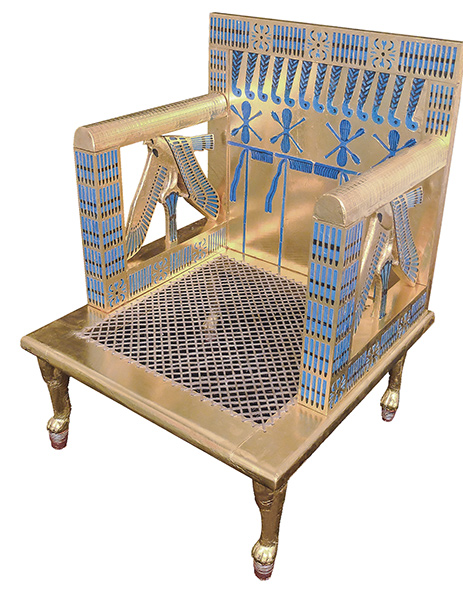Strata: Exhibit Watch: Masterpiece from the Pyramid Age

New life has been breathed into an ancient throne.
Found in the tomb of the Egyptian Queen Hetepheres (c. 2550 B.C.E.), the throne is the focal point of a new exhibit at the Harvard Semitic Museum, Recreating the Throne of Egyptian Queen Hetepheres. The beautiful chair on display in the exhibit is not the ancient throne itself, which was too deteriorated to salvage, but a modern reconstruction.
The replica throne was created by Rus Grant and David Hopkins, staff members of Harvard’s Giza Project, along with partners. The reconstruction is an impressive feat, especially considering that they had only fragments from the original throne and excavation notes from 90 years ago to use for guidance. The Giza Project team used the same materials to create this throne as were used in the construction of the original: cedar, gold foil, copper, bright blue faience tiles, gesso (a white paint mixture) and cordage seating.
Queen Hetepheres lived in Egypt around 2550 B.C.E. She was the wife of Pharaoh Sneferu—the founder of Egypt’s Fourth Dynasty during the Old Kingdom who built the Bent Pyramid, Red Pyramid and Meidum Pyramid—and the mother of King Khufu, the builder of the Great Pyramid.
Already a library member? Log in here.
Institution user? Log in with your IP address.

